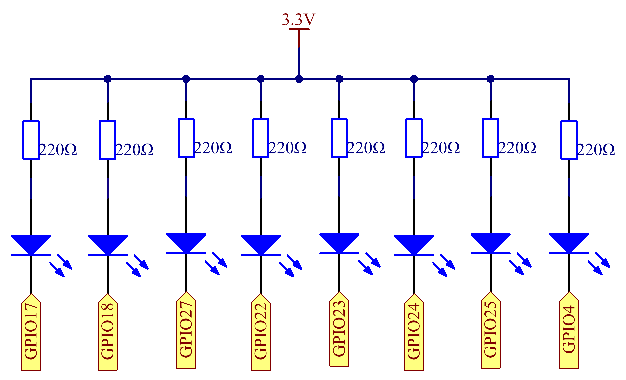Introduction
In this lesson, we will learn how to make eight LEDs blink in various effects as you want based on Raspberry Pi.
Components
– 1 * Raspberry Pi
– 1 * Breadboard
– 8 * LED
– 8 * Resistor (220Ω)
– Jumper wires
Schematic Diagram
Set GPIO17-GPIO25 to low level in turn by programming, and then LED0-LED7 will light up in turn. You can make eight LEDs blink in different effects by controlling their delay time and the order of lighting up.

Experimental Procedures
Step 1: Build the circuit.

Step 2: GPIO4 is the default pin for onewire driver (w1-gpio). In this lesson, we need to disable the onewire function and use it as an output pin.
sudo nano /boot/config.txtCommit the following line.
#dtoverlay=w1-gpioFor C Language Users:
Step 3: Change directory.
cd /home/pi/Sunfounder_SuperKit_C_code_for_RaspberryPi/03_8Led/Step 4: Compile.
gcc 8Led.c -o 8Led -lwiringPiStep 5: Run.
sudo ./8LedFor Python Users:
Step 3: Change directory.
cd /home/pi/Sunfounder_SuperKit_Python_code_for_RaspberryPi/Step 4: Run.
sudo python3 03_8Led.pyThen you will see eight LEDs brighten and dim left to right and right to left circularly, just like flowing water.

Further Exploration
You can write the blinking effects of LEDs in an array. If you want to use one of these effects, you can call it in the main() function directly.
